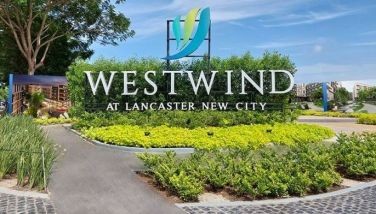RP a prime mover in green design
MANILA, Philippines - If you have gone down the intersection of Makati Avenue and Paseo de Roxas, you would have noticed the building construction with a sign that reads “We LEED”. That is not a misspelling, for sure.
In fact, it stands for Leadership in Energy and Environmental Design, an international certification system that verifies that a building or community is designed and constructed with responsibly. Responsibly, that is with “save planet Earth” in mind. LEED certification encompasses energy savings, water efficiency, less CO2 emissions, and other environment friendly measures.
LEED is a standard developed by the US Green Building Council that provides building owners and operators a “concise framework for identifying and implementing practical and measurable green building design, construction, operations and maintenance solutions,” as Wikipedia defines it.
During a recent talk at the National Retail Conference and Expo, Arch. Cathy Saldaña, Managing Director of PDP Architects introduced such global building and construction standards. A registered architect specializing in design and construction in residential, hotel design, restaurants and bars, offices, retail, mall zoning and hotel among others, Arch. Saldaña has worked with the Planning Resources and Operations Systems (PROS) that leads, pun intended, the LEED standard in the country.
According to Arch. Saldaña, LEED has counterparts in other parts of the world. There is the BREEAM, the British equivalent, that is the environmental assessment method and rating system for buildings since its operations started in 1990. There is also the Green Globe, which is a Canadian standard, as well as the Greenstar of Australia. In the ASEAN, there is BCA Green Mark of Singapore.
“Local standards exist in the Philippines, we have Berde (green), and we have well trained professionals that practice international standards,” says Arch. Saldaña. “Of the international standards, however, Greenstar and Green Mark are also best suited for the Philippines because of the similarities in climate,” she adds.
“The Philippines is tropical, and the design practices in the country have long been engaging standards that are just now being done in the US, and we are earning LEED points for these,” reveals Arch. Saldaña. “We are experts at passive cooling, using natural fresh air,” she adds.
“A good architect can orient structure to design wind and sunlight to create comfortable living. That is the beauty of tropical design. That is not by chance, but by design,” Saldaña states.
A few key design elements necessary to implement include Site Planning that is air and sunlight management, as well as Water Management which is the use of receptacles that collect rain and use for watering plants.
Already, the Philippines has a number of architects, engineers and designers that are experts in conservation and green energy, that use non-toxic, local, biodegradable materials, and understand the importance of indoor quality design in generating good health, the circulation and balance of air quality.
For retail, Arch. Saldaña introduced a number of local brands that are leading the way of green-minded business. Figaro and Red Crab use LED (light emitting diode) that cuts down on halogen use. The Ayala Group’s Marquee Mall in Pampanga and the UP Ayala Techno Hub in Diliman also serve as prime examples of pioneers in measurable business benefits that lower energy consumption using sustainable green design.
“Being environmental and green is not just about putting plants in your surroundings, it’s all about working with architect and interior design to create sustainable green design. It is creating the experience of exciting activity and leisure using future standards of energy efficient, water efficient, healthy and safe, environmentally responsive, durable and safe, and sustainable,” Saldaña stresses.
- Latest

























